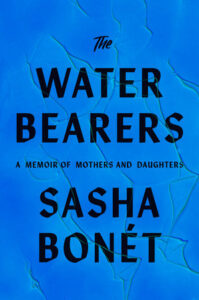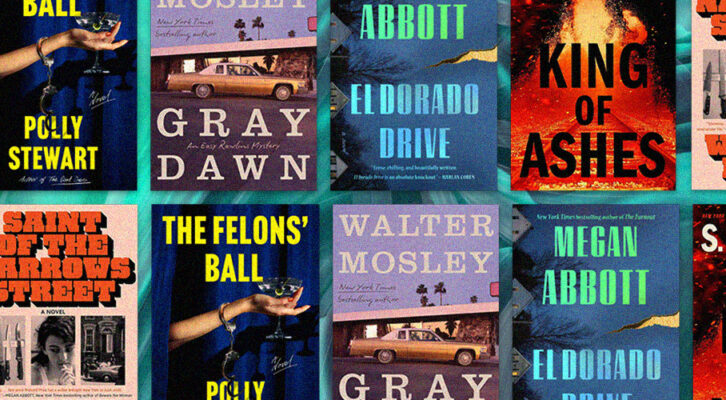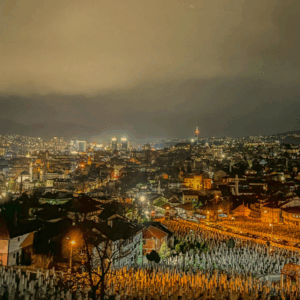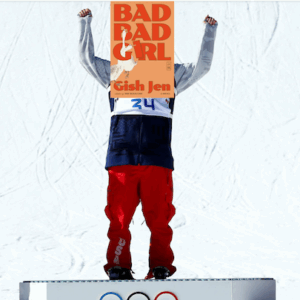
Sasha Bonét on Black Motherhood, Fragmented Storytelling, and Untangling History
G'Ra Asim Talks to the Author of “The Waterbearers”
I met my former MFA classmate Sasha Bonét on Admitted Student Night in the spring of 2014. I recognized her as a force of nature on sight. It couldn’t be more fitting that her new book finds her tracing the footsteps of the forbears who poured into her and dashing cold water on misconceptions about Black matriarchy. In her stunning debut, The Waterbearers, Sasha braids the stories of three generations of Black single mothers—her grandmother, her mother, and herself—with portraits of leading Black women figures in American culture. Over Zoom, I talked with Sasha about grandmothers as gateways, wrestling with the simultaneity of love and harm, and the patchwork nature of Black life.
*
G’Ra Asim: We’re having this discussion ten years to the week of the beginning of our thesis workshop course in Columbia University’s nonfiction MFA program. You were developing the manuscript that would morph into The Waterbearers then. Where did you begin in terms of archival materials pertaining to your family? Could you walk us through the transition from having a concept for the book, to having research questions to pursue, to securing the materials that helped you answer those questions?
But when I hear about somebody being a first, my first thought is, “Oh my god, I can’t imagine what they had to endure.”
Sasha Bonét: I think that talking with my grandmother was the first step. And she kind of opened the world, this world I didn’t have access to. She helped me to orient myself in the past through her storytelling. By starting with her, it opened up more opportunities to talk with other people. Her speaking with me allowed other people [that I interviewed] to feel that they had the right to speak. So it’s like, ok, if she’s going to talk to you then I guess it’s ok for me to talk to you. She gave me some kind of agency within the family. I talked with her quite a bit before I interviewed anyone else. It gave me threads that she couldn’t finish and I could pick up with someone else. So she would situate me and if there were parts she couldn’t remember or that seemed left out, I could then go to the next family member and say “oh, Betty Jean said this. Does that sound familiar?” Or, “did you have this experience as well?” And then the other family members would expand.
It kept growing in this way. She was at the center. She gave me authority, permission, and really unlocked the family door. Which allowed other people to feel comfortable to speak. To feel like they weren’t betraying the family in some way. And then she also gave me this agency that made me feel like I could do this. I was piecing together stories from all these people and all these sources. Still, there were so many things I wasn’t able to find. But the things I was able to find felt a lot like the black experience in general. So it felt like the form was matching the subject.
GA: What is it about the form that resembled the subject? The fragmented nature of it?
SB: Yes. I gave myself permission to take these fragments and do something and not just say “oh, well, I can’t do this story because I only have these pieces and they’re not really cohesive.” That’s how it is. That’s how it’s going to be. That’s how we’ve survived. That’s how we’ve lived. That’s Black life. I kept thinking about jazz a lot and I thought about collage a lot. You take the pieces that you’re able to get and you build a life from it. I don’t think it lacks cohesion but I do think it’s fragmentary because you’re pulling from all these different places to create a life, to create a culture.
GA: As you were following this trail, to what extent were you finding out what the story was versus collecting the data to buttress the story you already had in mind?
SB: I can’t say I had a story in mind to be honest. When I first started conceiving of the project I didn’t know what it was going to be. I knew I wanted to explore Black womanhood in America and what that experience is like, and everything that shaped it. But I didn’t know what the story was. And the story kept changing as the research came in, as the interviews came in, it became more and more clear. All the way up until I finished the first draft, and even in the revisions the story was changing shape. So I think a big part of the process was collecting information but also following it where it goes.
GA: One of the crystalline images that stuck me with shows up in the third chapter. “My mother scheduled a vacation for us each summer and took us to the rodeo, but she was always on the sideline dozing off while we played.” The image of your mother being too sleepy to enjoy the spoils of her own hard work—or to even be fully present as her children enjoyed those spoils—struck me as such a succinct encapsulation of her sacrifice and her heroism, as well as their drawbacks. It was a tiny detail that made a big difference because there’s always the possibility of romanticizing the struggle to provide.
SB: I definitely wanted to show how far my mother had come from her upbringing in Third Ward, but ultimately what the cost is for that level of hustle and determination. Also this fight to become the first Black person to break through a barrier. I think we glamorize that. “Oh I was the first to do this thing.” But when I hear about somebody being a first, my first thought is, “Oh my god, I can’t imagine what they had to endure.”
That’s a theme that’s recurring throughout the book: the reality that love and self-loathing intertwine in parenting.
Especially in Black culture, the firsts are always glorified—as they should be—but there isn’t always a whole lot of talk about what they had to go through and sacrifice to get there, or what the people who loved them had to sacrifice for them to get there. In my family, my mother is a kind of hero. The one who got it all, who got the dream. The standard bearer. She’s that for all of her nieces and nephews and everyone. For them my mother represents the possibility of what can be. But I don’t think anyone except those who lived in her house really understood the toll it took on her. I think maybe because of her I’m able to have this outlook on seeing Black people who are setting new standards, breaking certain barriers, and me thinking about what it costs them. Sometimes it comes out. The cracks start to show.
GA: We can be so hypnotized by wealth and status that what becomes of the person who amassed them is not in the foreground. A person dozing right through their hard-earned reward is such an effective symbol for the fact that upward mobility is often a pyrrhic victory.
SB: For the person who’s checking those achievement boxes, it’s hard for them to humanize themselves and recognize that they’re deteriorating from the strain. It’s when you stop and reflect that you can start to fall apart. So I think there’s a fear of slowing down and taking a look at the destruction around and inside of you.
GA: I thought about the Nietzsche line “that what is done for love always occurs beyond good and evil” multiple times throughout your book. It came to a head at the end of Tributary # 35 which concerns Iberia Hampton and her son, Fred Hampton. You declare that “there’s nothing more revolutionary than love.” Do you see love’s influence as generally constructive? Are there characters in The Waterbearers who are motivated by love that you see as more morally complex than Iberia in terms of what that love drives them to do?
SB: That’s a good question. I think that love is always constructive, even when some things fall apart. I think my mother is a great example of that because in her eyes everything that she’s doing is because of her love for her children. But there’s so much destruction in that also. That’s a theme that’s recurring throughout the book: the reality that love and self-loathing intertwine in parenting. And even this idea of love and violence needing to coexist. A lot of the violence that the parents are inflicting on their children is coming from this idea of love, where I need to break you before you hurt yourself outside.
GA: Protective destruction.
SB: So that’s one thing. And what some of these women practice in the book is, they love their children, but they need to also teach them their position in the world. In many ways, that means telling their children that they’re unlovable, so they can learn that right at home, before they go out into the world. But the way that’s taught is often, “I’m just trying to help you survive this cruel world.” So that’s another destructive love practice.
How can I extract the parts that are beautiful and maintain this legacy, while also trying to extract the violence that shaped this legacy? That’s what this digging around is trying to do.
GA: But those things do sound counterrevolutionary.
SB: Yeah. bell hooks would not call that love.
GA: (laughing) That’s right.
SB: bell hooks is like, that’s not love, actually. And that’s really hard to accept. But yeah, I don’t think that that’s the kind of love that Iberia was providing to Fred necessarily. I think it’s another example of a generational divide with his mother coming from Louisiana, moving up North and having her children there. She’s looking at her son and saying, “it’s okay that you want to be free, but why would you want to be on the stage?” She had a completely different understanding of what it meant to be free and what was revolutionary. She was the union leader. She was about organizing. But she definitely wasn’t about making yourself a target by being center stage. I do think that love is it. It can be destructive, but I do think it’s all we have. It’s the foundation for anything useful. For any type of movement I think we need that. When I say movement, I don’t mean like a movement of the people, but a movement toward, through, and up.
GA: So it’s the propulsive force, any way you slice it, but it can propel us in directions that are constructive as well as destructive depending on how it’s harnessed.
SB: That’s the thing that I don’t have the answer to and that I’m trying to work through in the book. Which is, okay, there’s so much love. But there’s so much harm. How can I extract the parts that are beautiful and maintain this legacy, while also trying to extract the violence that shaped this legacy? That’s what this digging around is trying to do.
So in that way it’s like, yes, Iberia loved her son and taught him to love himself and therefore he could love us as a people and feel that the people were worth fighting for. I am sure that Iberia practiced some of the same practices as my grandmother in her house in some way as well. I’m kind of examining all of these women and all of these families and trying to figure out what’s working, what’s not, what can we hold on to here.
I also read through the slave narratives in the Library of Congress, the ones collected through the Works Progress Administration. What was most fascinating to me was how many turns of phrase these people were using that my mother says today. And also things that enslavers were saying to the enslaved, that they then said to their children, that my mother says to me, that Betty Jean had said to my mother. Things I heard daily. I wanted to stop the flow. Amputate those parts and not allow them to penetrate through our family any longer. But it was fascinating. This is exactly what the enslaver said to you right before he tied that person up to the tree, and now you’re saying that to me? There were so many echoes like that that had been passed on.
GA: You mentioned earlier that the role of the Black woman in the American psyche is often the other against which normalcy is defined. Sometimes I feel like we’re so in the soup of our perceived otherness that we actually underrate how much we’re influenced by people who other us, and how we influence them in turn. So just because someone has positioned you as this foil—the purported opposite of everything they are—doesn’t mean that that level of difference and separation is real. The very process of installing you as the other involves exchange and mutual influence. To root some of that stuff out that you’re talking about, we have to acknowledge that just because we’re othered doesn’t mean that we haven’t absorbed many of the values of the empire somewhat uncritically.
SB: Right. It’s such an intimacy that we have between us—Black people and White people—in this country. Of course we’re impacting each other.
__________________________________

The Waterbearers: A Memoir of Mothers and Daughters by Sasha Bonét is available from Knopf.
G'ra Asim
G’Ra Asim, a writer and musician, is the author of Boyz n the Void: a mixtape to my brother (Beacon Press). He has served as a writing director at the African American Policy Forum and a graduate teaching fellow in Columbia University’s Undergraduate Writing Program. His work has appeared in Slate, Salon, Guernica, The Baffler, and The New Republic. When not writing or teaching, he sings, plays bass and writes lyrics for DIY pop punk quintet babygotbacktalk, who were named one of Alternative Press’s “17 rising Black alternative bands who are leading the next generation.”



















